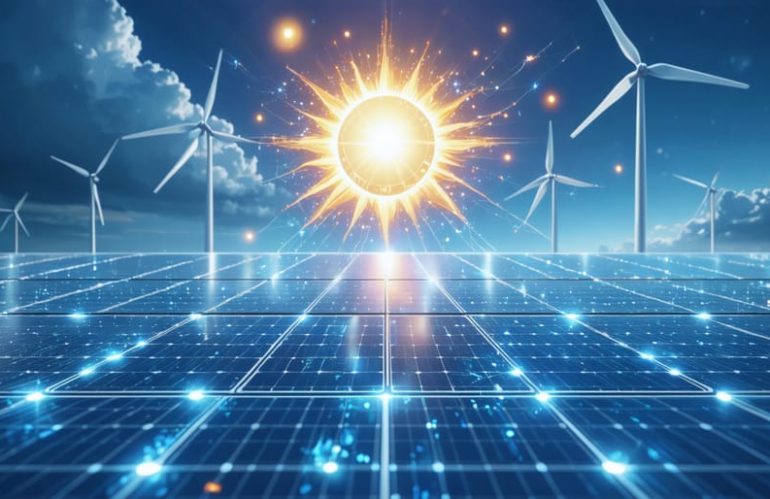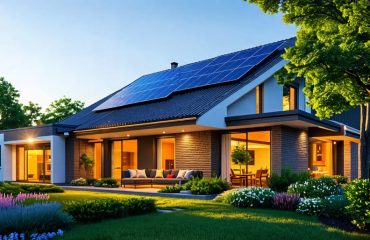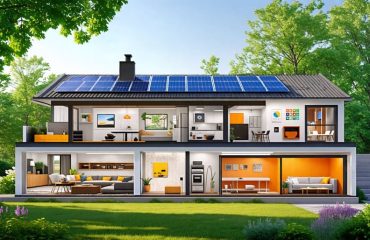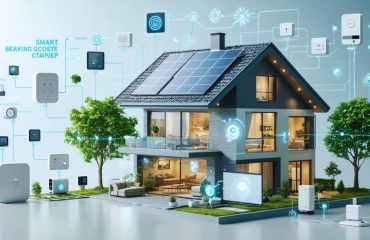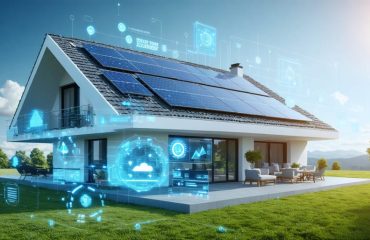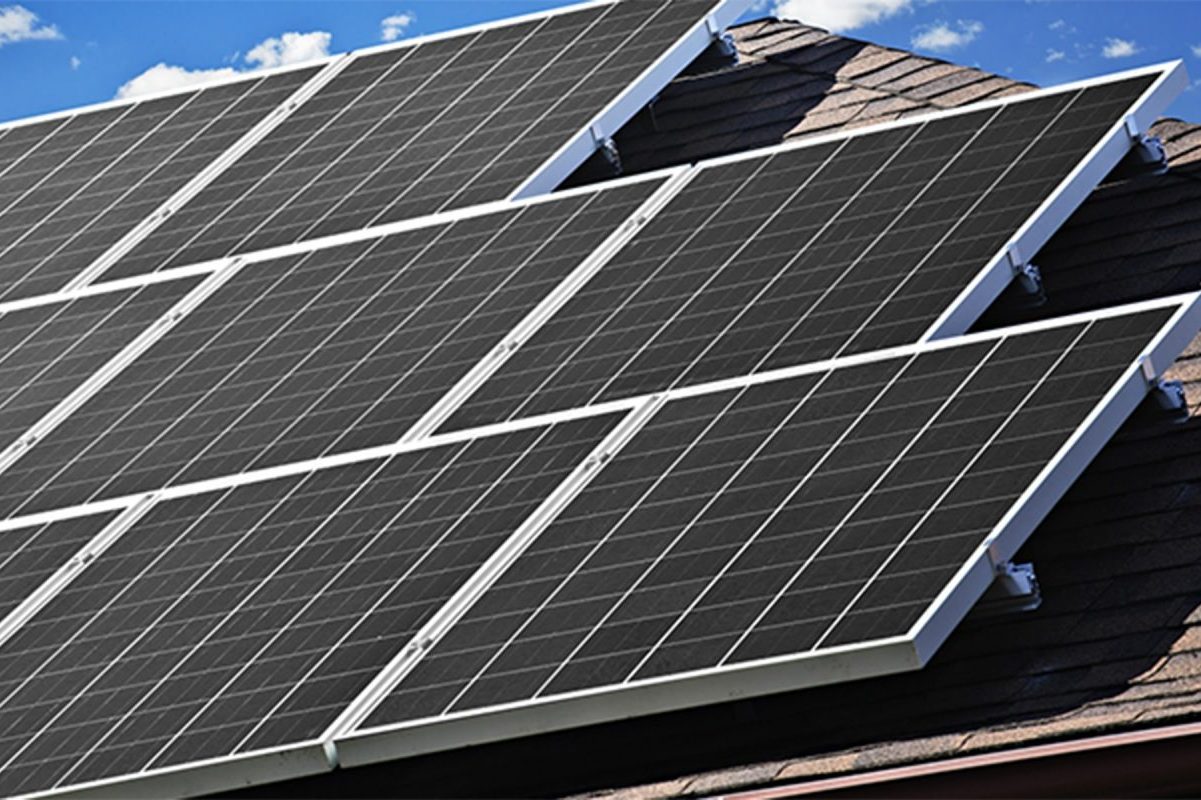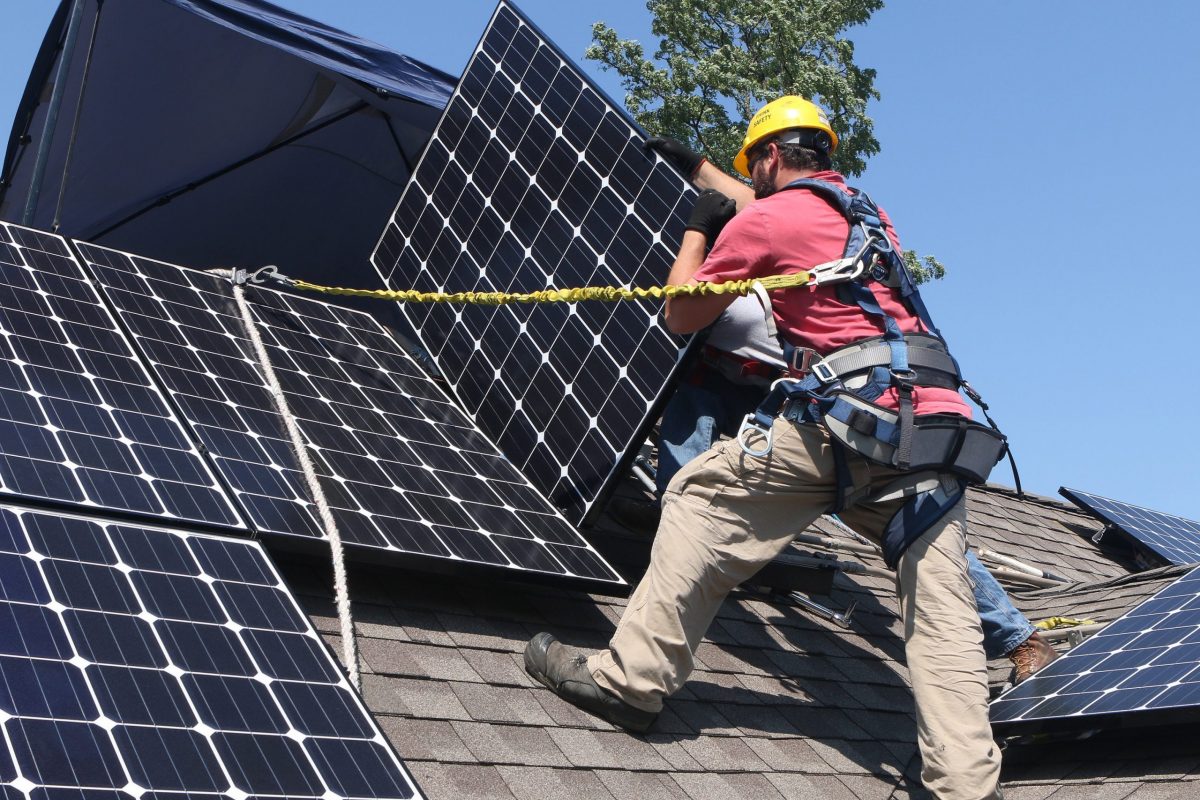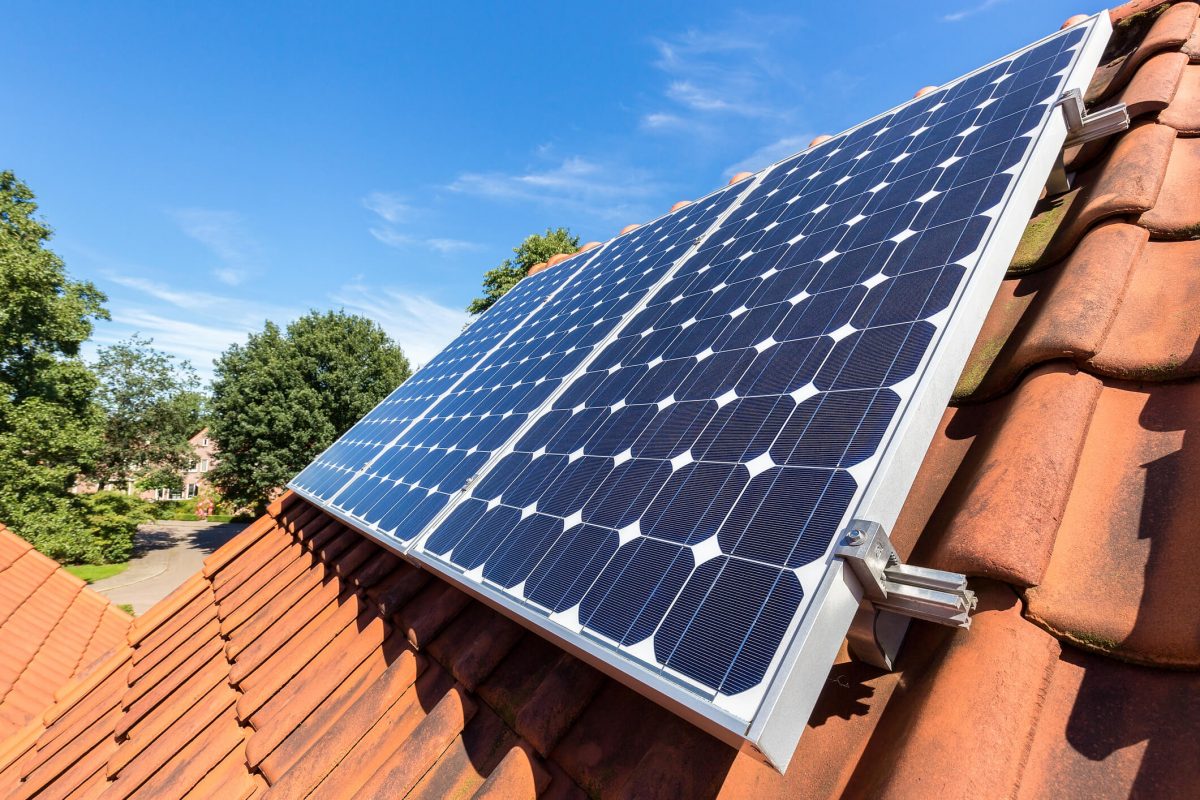Imagine powering your home with the perfect blend of solar panels, wind turbines, and traditional grid electricity – all working in harmony to slash your energy bills while protecting the environment. This is the promise of hybrid energy systems, an innovative approach that combines multiple power sources to create a more resilient and efficient home energy solution.
Hybrid energy systems represent the future of residential power, offering homeowners unprecedented control over their energy consumption and costs. By intelligently integrating renewable sources with conventional power, these systems automatically switch between energy sources to maximize efficiency and minimize expenses. During peak sunlight hours, your solar panels take the lead; when the wind picks up, turbines contribute their share; and the grid serves as a reliable backup when needed.
What makes these systems truly revolutionary is their ability to adapt in real-time to changing conditions and energy demands. Advanced monitoring technology ensures you’re always using the most cost-effective power source available, while smart storage solutions keep excess energy ready for when you need it most. For environmentally conscious homeowners seeking energy independence without sacrificing reliability, hybrid energy systems offer the perfect balance of sustainability, savings, and peace of mind.
What Makes a Hybrid Energy System Smart?
Components of an AI-Enhanced Hybrid System
A modern AI-enhanced hybrid energy system combines several key components that work together seamlessly. At its core are solar panels, typically installed on your roof, which capture sunlight and convert it into electricity. These panels connect to an advanced solar battery storage system that stores excess energy for later use, ensuring your home has power even when the sun isn’t shining.
The grid connection serves as a backup power source and allows you to sell excess energy back to utility companies. What makes these systems truly “smart” is the AI controller – the brain of the operation. This sophisticated device monitors your energy usage patterns, weather forecasts, and electricity rates in real-time. It automatically switches between power sources, optimizing energy use based on your preferences and habits.
The AI controller can predict when you’ll need more power, prepare for weather changes, and even learn from your daily routines to maximize efficiency. It’s like having a personal energy manager working 24/7 to reduce your bills while maintaining comfort.
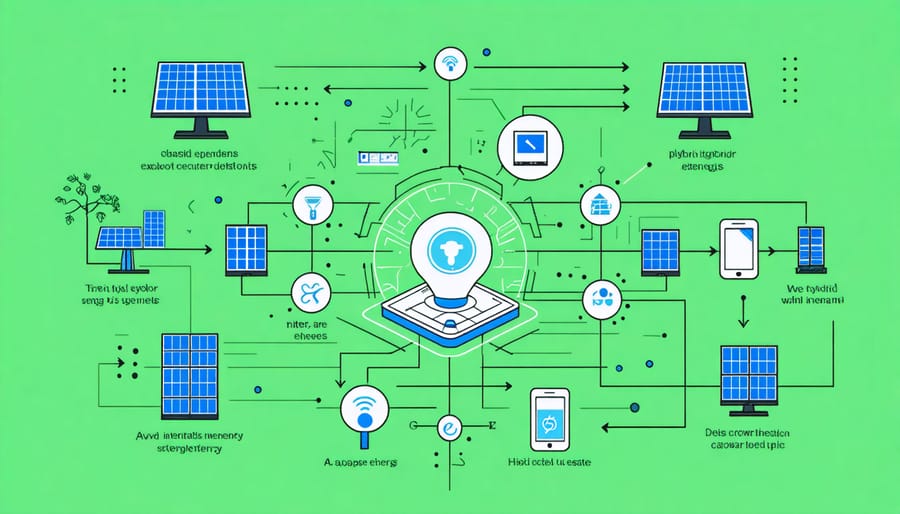
The AI Brain Behind Your Energy Management
Think of AI as your home’s energy-savvy manager, working 24/7 to make smart decisions about your power usage. This intelligent system continuously analyzes data from your solar panels, battery storage, and household appliances to optimize energy flow throughout your home.
By learning your daily routines and energy consumption patterns, the AI predicts when you’ll need more power and when you can rely on stored energy. For example, it might notice you typically run your dishwasher in the evening and automatically ensure your batteries are charged enough to handle this task without drawing from the grid during peak hours.
The system also monitors weather forecasts to maximize solar collection. When sunny weather is predicted, it might suggest running energy-intensive appliances during peak sunlight hours. During cloudy periods, it can automatically switch to stored power or grid electricity, whichever is more cost-effective at the time.
This smart optimization means you’re always using the most efficient and cost-effective power source available, potentially reducing your energy bills by 20-30% compared to traditional systems.
Real Benefits of AI-Driven Hybrid Systems
Intelligent Energy Distribution
Modern hybrid energy systems rely on sophisticated AI algorithms to make split-second decisions about energy distribution, maximizing both efficiency and cost savings. Think of it as having a smart energy manager working 24/7 to optimize your home’s power usage.
The AI system continuously monitors several key factors: your household’s energy consumption patterns, current electricity rates, weather forecasts, and battery charge levels. Based on this data, it makes intelligent decisions about when to store excess energy and when to use it.
During peak sunshine hours, when your solar panels are generating more power than needed, the AI determines whether to store the excess in batteries for later use or sell it back to the grid for profit. If electricity prices are high and your batteries are full, the system might choose to sell the surplus. Conversely, when grid prices are low, it might opt to store energy for use during expensive peak hours.
The system also learns from your daily routines. If it notices you typically use more electricity in the evening, it will ensure your batteries are adequately charged during the day. During cloudy periods, it might automatically switch to grid power when it’s cheapest, ensuring you always have reliable energy at the best possible price.
This intelligent distribution not only maximizes your energy independence but also significantly reduces your electricity bills while contributing to a more sustainable grid system.
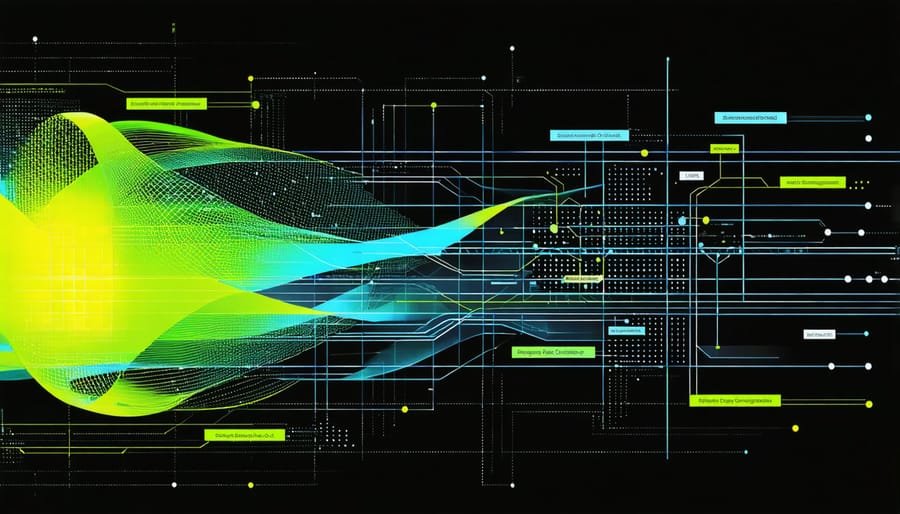
Predictive Load Management
Modern hybrid energy systems excel at anticipating your home’s energy needs through sophisticated predictive load management. This intelligent feature uses advanced algorithms to analyze your household’s energy consumption patterns and adjust accordingly. By learning from your daily routines, seasonal changes, and weather patterns, the system can effectively prepare for periods of high demand.
AI-powered solar forecasting takes this capability even further by predicting solar generation potential and matching it with your expected energy needs. For example, if the system anticipates cloudy weather during peak usage hours, it can store extra energy beforehand or adjust your home’s energy consumption schedule.
The system also considers factors like utility rates and grid demand to optimize energy usage. During peak rate periods, it may automatically switch to stored battery power, while utilizing grid power during lower-cost off-peak hours. This smart management helps you maximize savings while maintaining comfort.
For homeowners, this means no more worrying about sudden energy shortages or unexpected high bills. The system quietly works in the background, ensuring your home has the right amount of power at the right time. It can even send notifications to your smartphone about energy usage patterns and suggest ways to improve efficiency, putting you in control of your home’s energy future.
Smart Grid Integration
Modern hybrid energy systems are revolutionizing home power management through smart grid integration, making your home’s energy usage more efficient and cost-effective than ever before. This intelligent system acts like a personal energy manager, automatically deciding when to use, store, or sell your power based on real-time conditions.
Using artificial intelligence, your hybrid system can predict peak usage times and adjust accordingly. When electricity rates are high, it can automatically switch to stored battery power, and when rates are low, it can charge your batteries or run high-consumption appliances. This smart management can lead to significant savings on your monthly bills.
The system also enables you to participate in energy trading programs, where you can sell excess power back to the grid at premium rates. During peak demand periods, you could earn credits or cash by contributing your stored energy to support the community grid. Some utility companies even offer special incentives for households that help balance grid demand this way.
Beyond financial benefits, this intelligent grid interaction helps create a more resilient and sustainable energy network. Your home becomes part of a larger, more efficient energy ecosystem, reducing strain on the power grid during critical times and supporting the broader transition to renewable energy.
Setting Up Your Smart Hybrid System
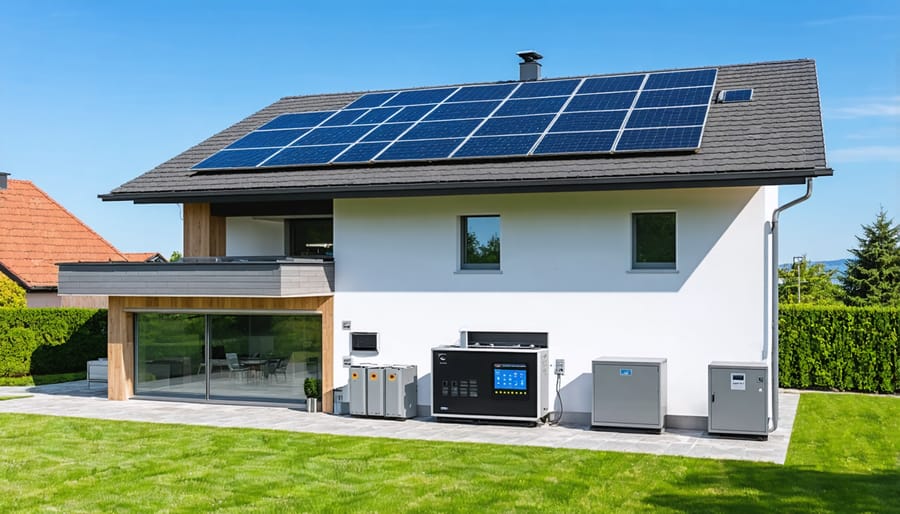
Choosing the Right Components
Selecting the right components for your hybrid energy system is crucial for optimal performance and long-term satisfaction. Start by assessing your home’s energy needs through a professional energy audit, which will help determine the appropriate system size and configuration.
For solar components, consider high-efficiency panels with a proven track record of reliability. Look for panels with efficiency ratings above 20% and warranties of 25 years or more. The inverter choice is equally important – hybrid inverters are specifically designed to work with both solar panels and battery storage, making them ideal for these systems.
When it comes to battery storage, evaluate options based on capacity, cycle life, and safety features. Lithium-ion batteries are currently the most popular choice due to their excellent performance and decreasing costs. Consider batteries with smart management systems that can optimize charging cycles and protect against overcharging.
Wind turbines, if included, should be sized according to your local wind conditions and space availability. Choose models with low start-up speeds and good power curves for residential applications. For backup generators, select ones with automatic transfer switches and fuel types readily available in your area.
The key to success lies in compatibility between components. Work with certified installers who can recommend pre-tested combinations of equipment. They should also ensure your system meets local building codes and utility requirements.
Remember to factor in future expansion possibilities. Choose components that allow for system growth as your energy needs change. This might mean selecting an inverter with higher capacity than initially needed or ensuring your battery system is modular for easy expansion.
Integration and Optimization
Setting up an effective hybrid energy system requires careful integration of various components and ongoing optimization to achieve peak performance. Start by installing advanced solar management software to monitor and control your system’s operation. This technology serves as the brain of your hybrid setup, making real-time decisions about when to use, store, or sell excess energy.
Begin by configuring your system’s basic parameters, including peak usage times, preferred energy sources, and storage priorities. Most modern systems offer user-friendly setup wizards that guide you through this process. Once the initial setup is complete, allow the system to collect data for at least two weeks to establish your household’s energy consumption patterns.
Fine-tuning your hybrid system involves adjusting settings based on seasonal changes, energy prices, and your specific needs. For example, you might program the system to prioritize solar power during peak sunlight hours and switch to grid power during cloudy periods or at night. Many systems also allow you to set different modes for weekdays versus weekends, accounting for varying energy usage patterns.
Regular maintenance checks and software updates ensure your system continues to operate efficiently. Monitor system performance through your smartphone app or web dashboard, paying attention to energy production, consumption, and storage levels. Most systems provide helpful alerts and recommendations for optimizing performance, such as suggesting when to clean solar panels or adjust battery charging cycles.
Remember that optimization is an ongoing process. As your energy needs change or new features become available through updates, don’t hesitate to adjust your system’s settings accordingly.
Future-Proofing Your Energy Investment
Investing in a hybrid energy system today means preparing for tomorrow’s energy landscape. These systems are designed with scalability in mind, allowing you to expand your setup as your energy needs grow or as new technologies become available. For example, you can start with a basic solar-plus-storage configuration and later add wind power components or upgrade to more advanced battery systems.
The modular nature of hybrid systems makes them particularly future-proof. As battery technology continues to advance, you can upgrade your storage capacity without overhauling the entire system. Similarly, when more efficient solar panels hit the market, you can integrate them into your existing setup, enhancing overall performance.
Smart technology integration is another key factor in future-proofing. Modern hybrid systems come with sophisticated energy management software that can be updated remotely, ensuring your system stays current with the latest efficiency algorithms and grid integration capabilities. This adaptability means your investment continues to optimize performance even as energy markets evolve.
Looking ahead, exciting innovations are on the horizon. Bi-directional charging capabilities will allow electric vehicles to serve as additional power storage units. Advanced artificial intelligence will further optimize energy flow based on usage patterns and weather forecasts. Virtual power plant capabilities will enable homeowners to participate in energy trading markets, potentially creating new revenue streams.
By choosing a hybrid energy system today, you’re not just investing in current technology – you’re investing in a flexible platform that can adapt to and benefit from future energy innovations. This forward-thinking approach ensures your investment maintains its value and functionality for years to come.
Hybrid energy systems represent a significant step forward in our journey toward a more sustainable and energy-efficient future. By combining multiple power sources, these systems offer homeowners unprecedented control over their energy consumption while significantly reducing their carbon footprint and utility bills. The flexibility and reliability of hybrid systems make them an attractive option for those looking to gain energy independence without compromising on comfort or convenience.
As energy costs continue to rise and environmental concerns become more pressing, investing in a hybrid energy system is not just an environmentally conscious choice – it’s a smart financial decision. These systems pay for themselves over time through reduced energy bills and potential government incentives, while also increasing your property’s value.
The time to act is now. With advancing technology making hybrid systems more affordable and efficient than ever before, homeowners have a unique opportunity to be part of the clean energy revolution. By embracing hybrid energy systems today, you’re not just securing your energy future – you’re contributing to a more sustainable world for generations to come. Take the first step by consulting with energy professionals to design a hybrid system that meets your specific needs and goals.

